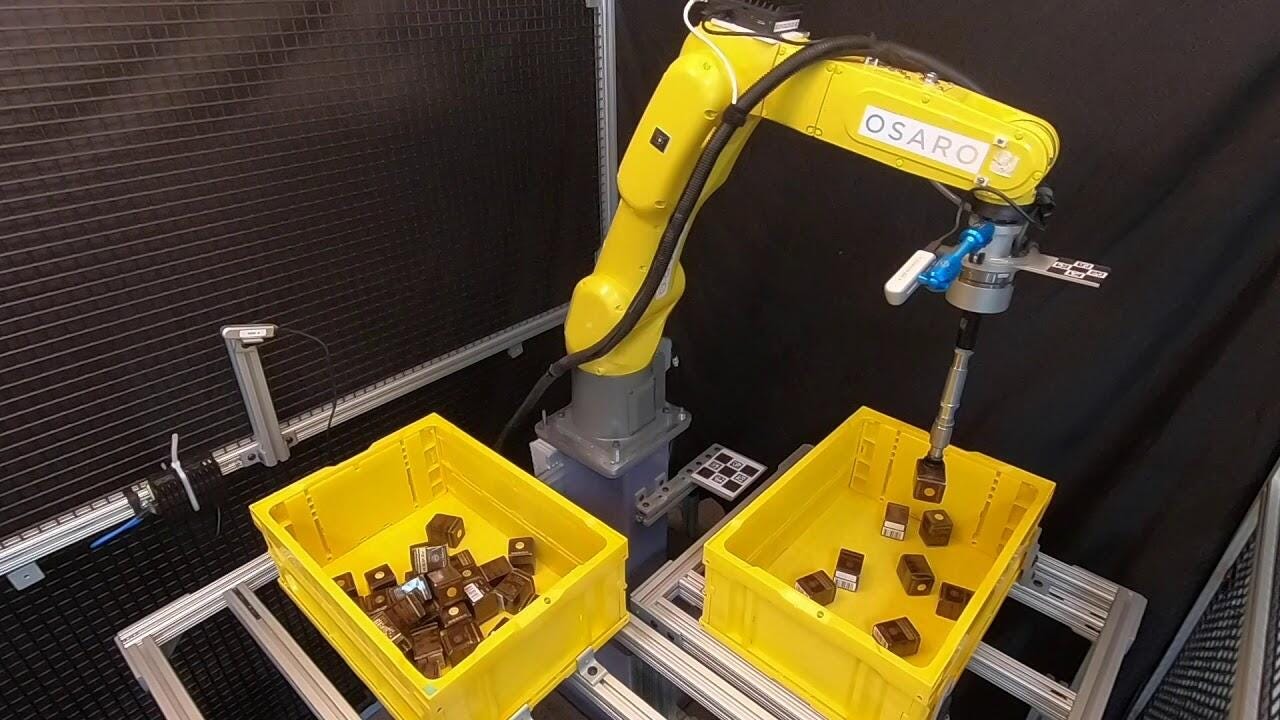































 Osaro Robotics
Osaro Robotics Warehouse workers don't have an easy job. In an on-demand fulfillment economy the work is ceaseless, the pay low, and the drive for efficiency brutal. Earlier this year the Department of Labor even stepped in with an initiative attempting to safeguard warehouse workers' rights.
Add to that the resigned inevitability hovering over many of these jobs. Robots, already prominent in logistics operations, are steadily taking on tasks that previously required humans, including in the crucial final stage of picking and sorting.
One example, at a warehouse in Novato some miles north of San Francisco, Zenni Optical is assigning a crucial stage of e-commerce fulfillment to a team of three specially trained robots provided by OSARO. The deployment represents one of the first times a robot will be assigned the responsibility of working with an automated mechanical bagging system to ensure a customer's unique order is placed into the correct bag for shipment.
"Perfect job for a robot!" you might say. Certainly true, but in fact, this task requires skills that we humans take for granted, such as the ability to identify an object of a particular shape and color from among other similar objects and then pick up that object, check its ID, and then put it into a labeled bag. Easy for humans; hard for robots.
Machine vision and grasping technology, however, have progressed to a point where even these highly dexterous and variable tasks can be automated. In the case of Zenni, each eyeglass order is associated with a customer's prescription and can be sorted and bagged on sight. The fact that the robots here are picking and placing glasses is significant as a bellwether of just how far machine vision has come. The picking and bagging robot features OSARO's advanced AI vision system, which enables the robot to perform advanced pick-and-place operations by recognizing transparent, deformed, reflective, and irregularly shaped items-even if they are randomly arranged in the inventory storage bins-and then placing them into a bag for shipment to the customer.
All this adds up to a poignant case of Industry 2.0 robots very probably stepping in to take over millions of existing and future jobs across the fulfillment paradigm. The U.S. may need to add a whopping 1 billion square feet of warehouse space by 2025 to keep up with online demand, but the boom in the economy won't come with a boom in employment. That feels like a small concession in a tight labor market, but as we're facing a potential recession few have accurately reckoned with the consequences of automation over the next few years. As logistics goes, so go sectors like fast food and even well-paid jobs like construction.
Of course, this is good news for developers of automation solutions for the logistics sector, pioneering companies like Locus Robotics, which makes autonomous mobile robots (AMR) for fulfillment warehouses. The company recently raised its overall valuation to$1 billion. Last year a Locus spokesman told me the company expects that over a million warehouse robots will be installed over the next four years while the number of warehouses using them will grow ten
 Tags chauds:
Intelligence artificielle
Innovation et Innovation
Tags chauds:
Intelligence artificielle
Innovation et Innovation